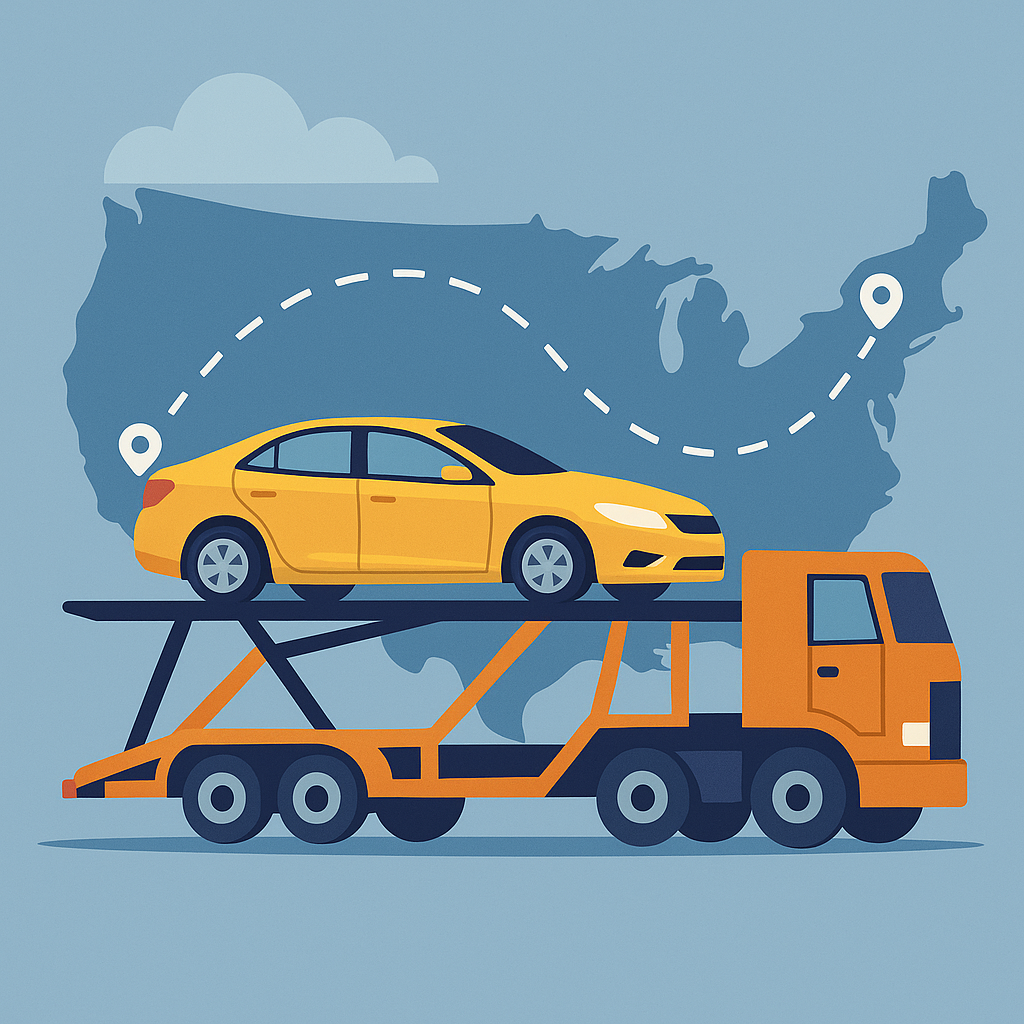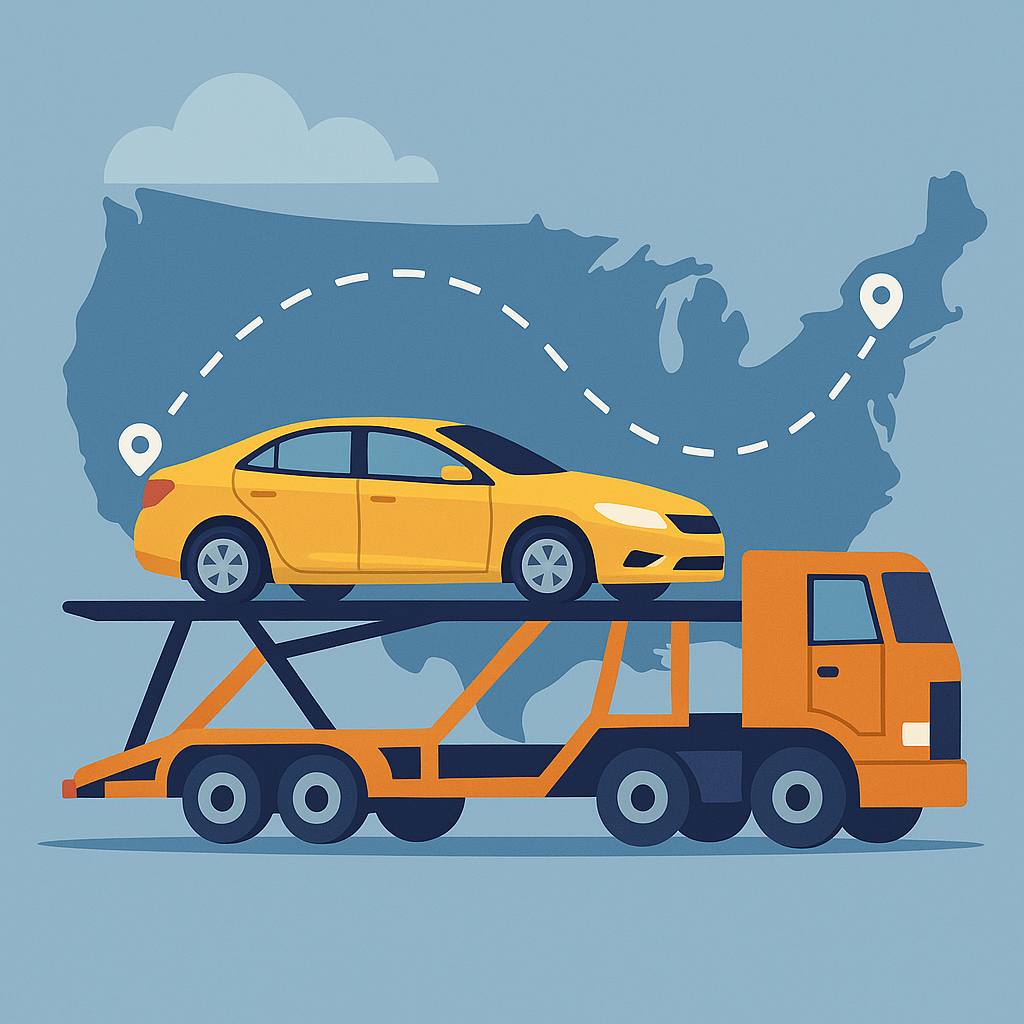Moving to a new state comes with a mess of details, and the vehicle often becomes the piece that slows everything down. Some people will drive the miles themselves and call it a road trip. Others hand the keys to a carrier and keep their time for packing, leases, and work. I’ve hauled enough to say this: transporting a car to another state is easier when you break the job into steady steps, prepare the car the right way, and keep expectations realistic about timing. Costs shift with distance, trailer type, and the size of the vehicle, but the rhythm of a smooth shipment stays the same.
Open trailers run more routes and keep the bill lower. Enclosed trailers shield paint and trim and cost more. A compact sedan takes less space and weighs less than a large SUV. Rural pickups take time, downtown handoffs take planning. None of that is mysterious. If you want a baseline before you talk to anyone, this page sets the frame on dollars and why they move up or down: car shipping costs. Once you see the range for your route, the rest of the plan falls into place fast.
Step-by-step car shipping guide
Here is the sequence I use on most interstate jobs. It is steady, practical, and avoids guesswork.
- Verify the company. Look up licensing and insurance. Read recent feedback that mentions pickup windows, driver communication, and condition on arrival.
- Pick a trailer type. Open for daily drivers and tighter budgets. Enclosed for luxury, classic, or fresh paint that needs cover. If you want a fuller prep list from start to finish, this walk-through helps: how to ship a car.
- Get quotes in writing. You want pickup window, transit estimate, what the price includes, and who to call during the run.
- Book early. Summer, month ends, and holiday weeks fill quickly. A little lead time keeps scheduling calm.
- Prepare the vehicle. Wash it, take dated photos of every panel, fold mirrors, remove toll tags and parking passes, and empty the trunk and cabin.
- Fuel level. Leave about a quarter tank. That is enough to move on and off the trailer without adding weight.
- Plan a workable spot. Long rigs need turning room. If your street is tight, pick a nearby wide lot and share a pin with the driver.
- Meet at pickup. Walk the car with the driver. Condition notes go on the Bill of Lading. Both of you sign after you agree on the notes.
- Stay reachable. Keep your phone on during the pickup and near delivery day. A missed call can stretch a short delay into a long one.
- Inspect at delivery. Match the car against your photos and the paperwork before you sign off. Ask questions on the spot, not later.
The first stage of the interstate auto transport process is pickup and loading. The driver arrives inside the window, lines up ramps or a lift, and sets the vehicle in the trailer position that balances weight across the rig. Wheel straps or chains secure the car at the right points. A good driver will recheck tie-downs after the first few miles and again at fuel stops. The car stays parked until you see it again at delivery.
The second stage of the interstate auto transport process is delivery and handoff. Large trucks cannot always turn into cul-de-sacs or squeeze into garage alleys. A nearby wide street, shopping center lot, or business park solves that in minutes. Once the vehicle is on the ground, both of you walk it again. Mileage gets confirmed, notes get compared to the original Bill of Lading, and any difference is written before you sign. Most days, nothing new is there, and the paperwork closes in a couple of minutes.
Families juggling leases, keys, and job start dates benefit from a few steady state-to-state moving tips. Book early when your dates are fixed. Share a second contact number in case your phone battery dies. Keep a small buffer on delivery day. Wind, traffic, and road work add minutes to even the best route. A little flexibility on the clock keeps nerves down for everyone.
Another group of state-to-state moving tips is all about getting the vehicle ready. Check tire pressure and battery health. Disable alarms. Remove racks or antennas that sit higher than the roof line. If the car has quirks, say so up front. A trunk that only opens with the key, a starter that sticks, or a window that hesitates will not stop a load, but those details help the driver choose a safe spot on the trailer and avoid extra shuffling.
On cost, routes with steady demand usually price better than rare pairings. Short hops can look high per mile because base expenses are spread over fewer miles. Long runs look friendlier per mile but total dollars rise with distance. Open carriers keep price down, enclosed carriers add protection at a premium. That cost page linked above lays out the moving parts plainly. Use it to set expectations, then pick the service that matches your comfort level and timeline.
Paperwork stays simple if you keep it organized. The Bill of Lading records the condition at pickup and at delivery. Your own photos back it up. Most licensed carriers carry coverage for vehicles on board; ask for a copy if you want it for your files. Some teams take deposits, others settle on delivery. Many still prefer certified checks, and some accept cards for deposits. Ask about money and methods before the truck appears at the curb.
If you want a single place to review prep steps from cleaning to inspection, this page helps as a pocket checklist: how to ship a car. It keeps the small items from slipping through while you deal with the rest of the move.
FAQ: frequent mistakes when shipping a car
Chasing the lowest line on the quote sheet
A rock-bottom number can hide weak insurance, vague pickup windows, or fees that surface later. Aim for a fair price backed by steady reviews and plain answers.
Leaving belongings in the cabin or trunk
Loose items shift and scuff panels. Carriers do not cover personal property. Keep the interior empty. A charging cable or floor mats are fine. Bags and tools are not.
Skipping photos before pickup
Dated shots of each panel, the roof, wheels, and interior shorten conversations at delivery. Take them right after the wash in decent light.
Forgetting the quarter tank rule
Too much fuel adds weight. Too little can stall loading when the driver needs to shuffle positions on the trailer. A quarter tank works best.
Hiding mechanical quirks
If the battery is weak or the trunk release sticks, say so. Surprises slow everyone down. A heads-up lets the driver plan a safe spot on the trailer.
Expecting exact pickup and delivery times
Interstate work runs on windows. Weigh stations, wind, and city traffic do not care about tight schedules. Plan a broad window and a backup meeting spot.
Not planning space for the truck
Long rigs need turning room. If your street is narrow, choose a lot nearby in advance and text a pin. Five minutes of planning beats an hour of circling.
Paying without reading terms
Know deposit policy, balance method, and any storage or change fees. Get it in writing before the truck rolls.
Rushing the delivery inspection
Walk the car slowly, match your photos to the Bill of Lading, and only then sign. If something looks new, it gets written right away.
Skipping prep guides during a busy week
A quick review prevents small misses. If you want everything in one place, use the full checklist here: how to ship a car.
Transporting a car to another state does not need to steal your time or your patience. Pick the trailer type that fits your comfort level, lock dates with a small buffer, prep the vehicle, and meet the driver with photos and a clear handoff plan. With that, the miles in between stay quiet, and the car shows up the way it left.


